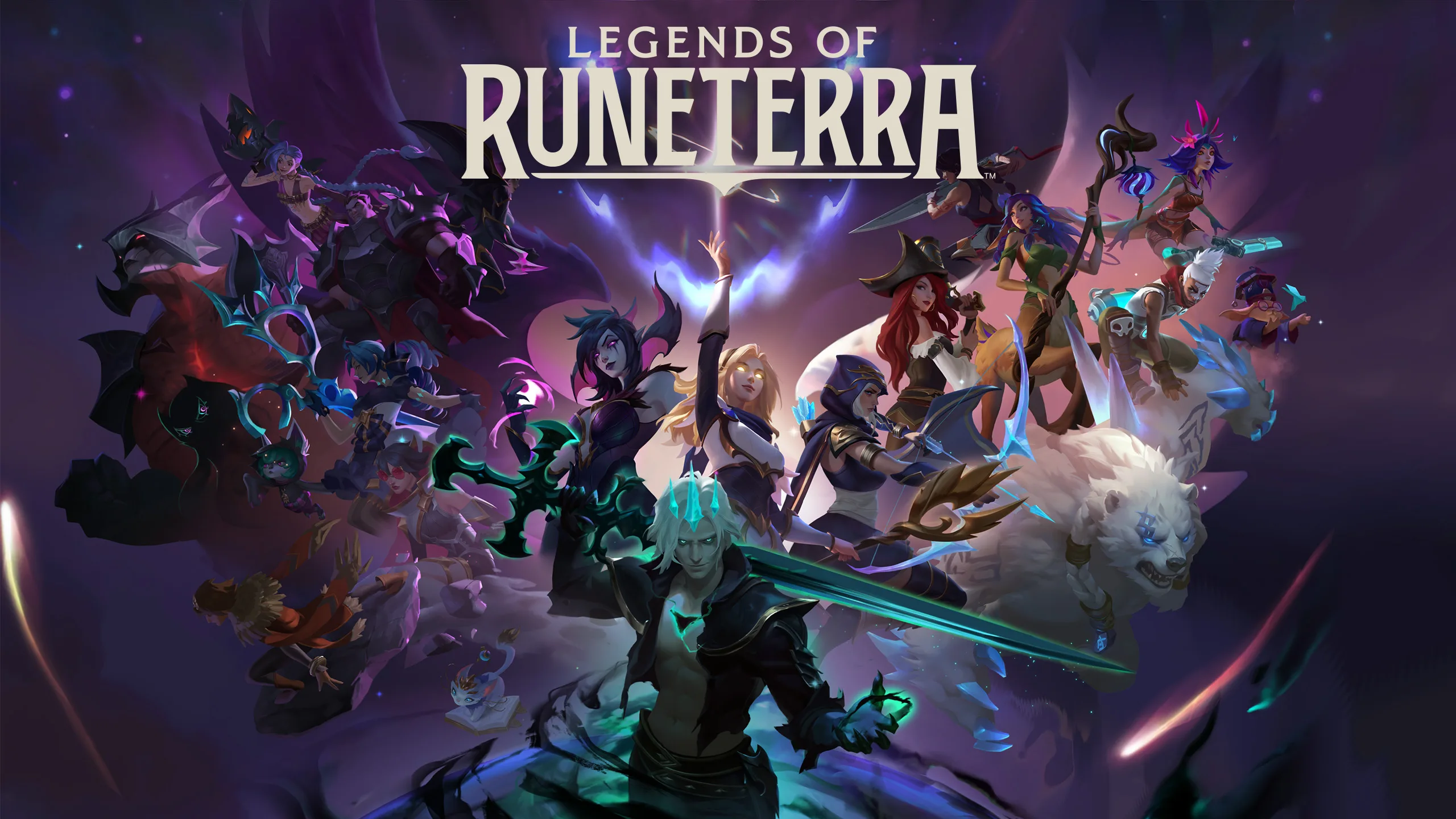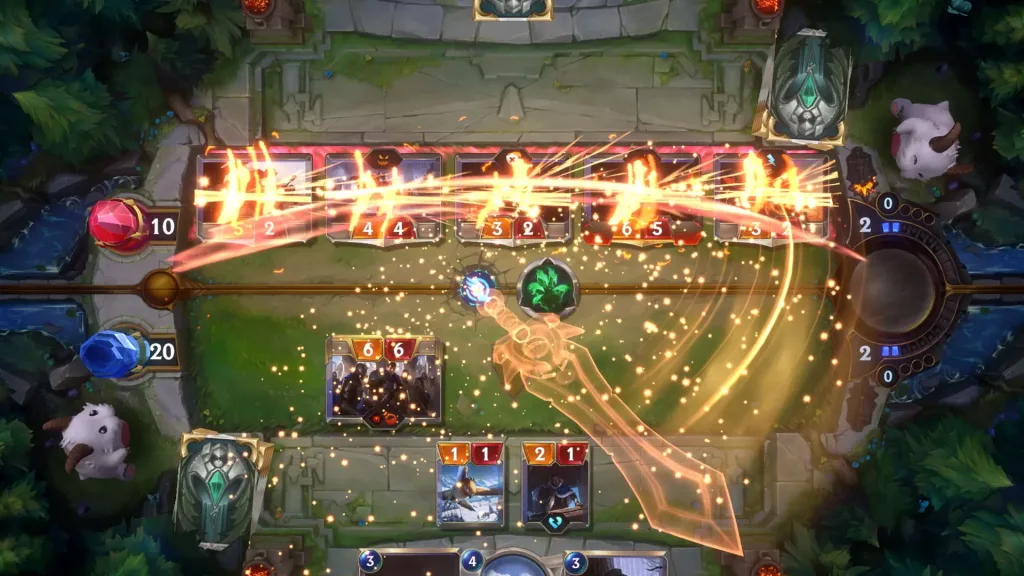
Legends of Runeterra: Mastering the Strategy Card Game
Legends of Runeterra, developed by Riot Games, is a free-to-play strategy card game that brings the world of Runeterra to life through dynamic gameplay and unique mechanics. Released as a competitor to Hearthstone and Magic: The Gathering, the game has carved its niche with innovative features and a player-friendly monetization model. This article will guide you through the essentials of Legends of Runeterra, including its gameplay mechanics, champion dynamics, and strategies to improve your experience.
Gameplay Mechanics
At its core, Legends of Runeterra emphasizes strategic thinking and adaptability. Players build decks with cards representing characters, spells, and regions from the League of Legends universe. Each match pits two players against each other, aiming to reduce their opponent’s Nexus (base) to zero health.
What makes Legends of Runeterra stand out is its depth of interaction. Unlike many card games, where one player’s turn may leave the other waiting passively, this game ensures constant engagement. The balance of attack and defense creates a dynamic flow that keeps every match exciting and unpredictable. The success of a game often hinges on your ability to anticipate your opponent’s moves while effectively executing your strategy.
The Turn System
Legends of Runeterra employs a unique alternating turn system where players share an attack token. This structure ensures that both participants remain engaged throughout the game. The phases are divided into Attack and Defense rounds, providing opportunities to respond to your opponent’s moves.
Players use mana, which regenerates and grows each round, to play cards. Any unused mana contributes to a spell mana pool, enabling strategic plays later. This system encourages planning and resource management, making each decision impactful. By combining aggressive tactics with defensive measures, players can outwit their opponents and secure victory.
Mastering the turn system involves more than just understanding the rules—it requires an intuitive grasp of timing and resource allocation. Knowing when to play your most powerful cards versus when to conserve resources is key to staying ahead in competitive matches.
Champion Cards and Their Role
Champions are pivotal in Legends of Runeterra, often defining the deck’s theme and strategy. They are powerful cards that can level up when specific conditions are met during gameplay, unlocking enhanced abilities that can turn the tide of a match.
These cards represent iconic characters from the League of Legends universe, bringing their unique lore and abilities into the game. For example, a champion like Jinx thrives on chaos and aggressive play, while Braum offers a defensive approach, shielding allies from harm. Understanding how to utilise champions effectively is critical to mastering the game.
Regional Synergy
The game features multiple regions, such as Demacia, Noxus, Ionia, and Shadow Isles, each with its strengths and weaknesses. Building a deck around a region or combining two regions allows for creative strategies and diverse playstyles. Champions often align with their respective regions, further solidifying the thematic experience.
For instance, Demacia focuses on powerful units and buffs, making it ideal for players who enjoy a straightforward approach. In contrast, Shadow Isles excels in sacrifice mechanics, allowing for dramatic comebacks even when the odds seem stacked against you. Experimenting with various regional synergies can reveal exciting new strategies and help you adapt to the ever-evolving meta.
In tournaments and high-level play, understanding regional synergies can be the difference between victory and defeat. Competitive players often analyze the strengths of their regions and exploit their opponents’ weaknesses, creating a constantly shifting landscape of strategies.

Tips for Success in Legends of Runeterra
New players often face a steep learning curve, but understanding the basics and practising consistently can improve their performance. Legends of Runeterra is as much about preparation as it is about execution. With patience and persistence, even beginners can excel.
Before diving into competitive matches, consider familiarizing yourself with the game’s mechanics through casual play. The tutorials and practice modes are excellent for gaining confidence and learning the nuances of each region and champion. As you grow more comfortable, you’ll find yourself better equipped to handle the complexities of ranked matches.
Deck Building Fundamentals
Creating a balanced deck is key to success. Consider including a mix of low-cost and high-cost cards to maintain early-game tempo while preparing for late-game dominance. Don’t forget to incorporate spells that counter opponents’ strategies effectively.
Another important aspect is familiarity with meta decks. Following the current meta helps you understand which strategies are most effective and how to counter popular archetypes. Resources such as community forums, guides, and gameplay videos can provide valuable insights into optimizing your deck.
Finally, don’t shy away from experimenting. Legends of Runeterra rewards creativity, and many of the most successful decks are born from bold innovations. Whether you prefer aggressive playstyles or calculated control, there’s a strategy to suit your preferences. Remember, each match is an opportunity to learn and grow as a player.
Legends of Runeterra continues to evolve with regular updates and expansions. Staying informed about these changes can provide a competitive edge and enhance your overall experience in the world of Runeterra.
